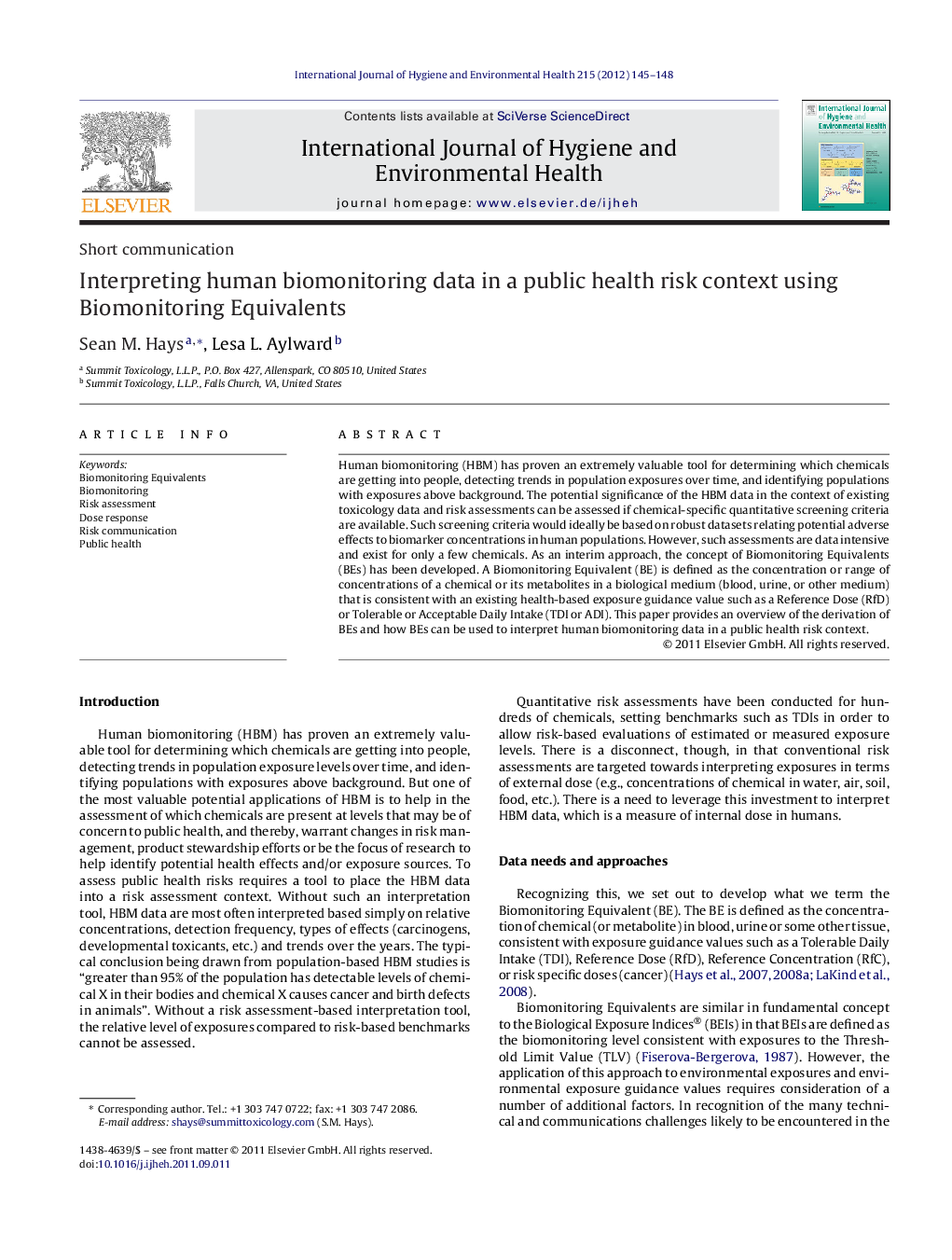| Article ID | Journal | Published Year | Pages | File Type |
|---|---|---|---|---|
| 2588769 | International Journal of Hygiene and Environmental Health | 2012 | 4 Pages |
Human biomonitoring (HBM) has proven an extremely valuable tool for determining which chemicals are getting into people, detecting trends in population exposures over time, and identifying populations with exposures above background. The potential significance of the HBM data in the context of existing toxicology data and risk assessments can be assessed if chemical-specific quantitative screening criteria are available. Such screening criteria would ideally be based on robust datasets relating potential adverse effects to biomarker concentrations in human populations. However, such assessments are data intensive and exist for only a few chemicals. As an interim approach, the concept of Biomonitoring Equivalents (BEs) has been developed. A Biomonitoring Equivalent (BE) is defined as the concentration or range of concentrations of a chemical or its metabolites in a biological medium (blood, urine, or other medium) that is consistent with an existing health-based exposure guidance value such as a Reference Dose (RfD) or Tolerable or Acceptable Daily Intake (TDI or ADI). This paper provides an overview of the derivation of BEs and how BEs can be used to interpret human biomonitoring data in a public health risk context.
